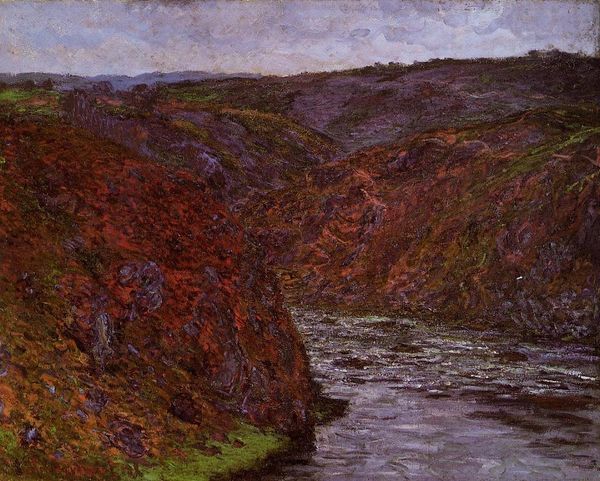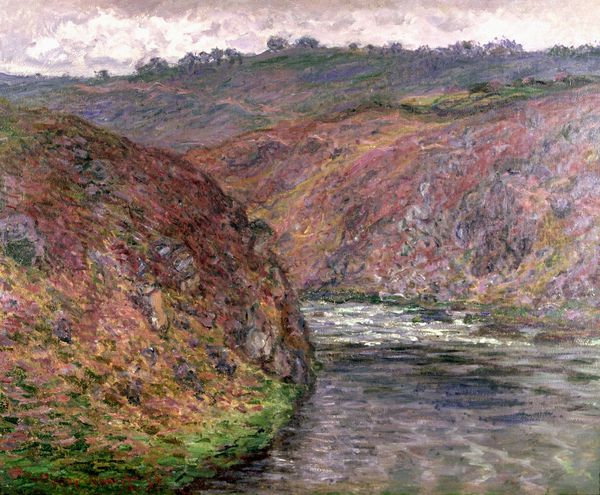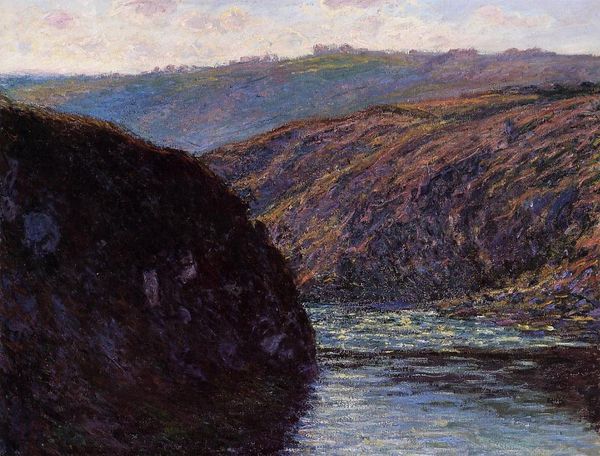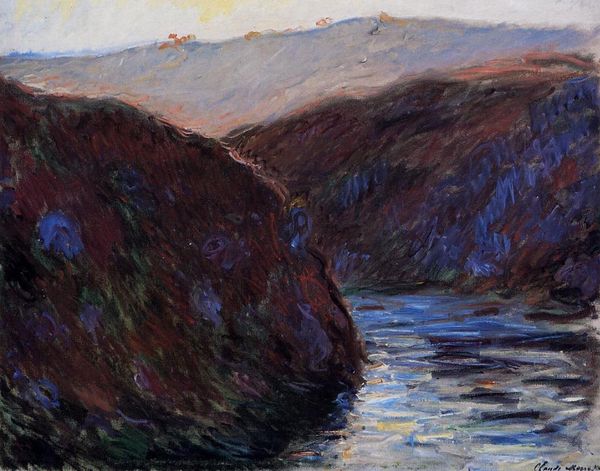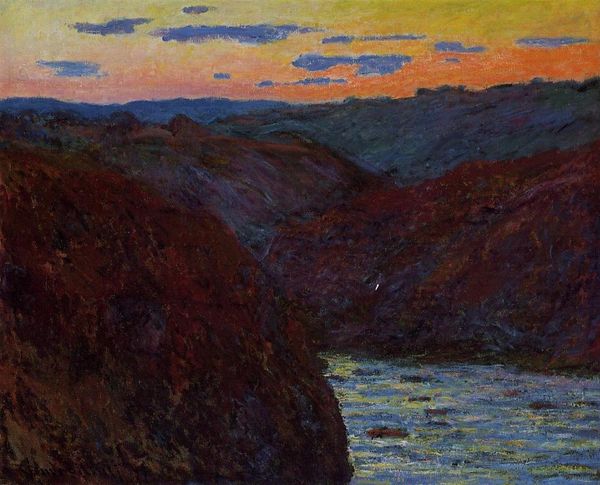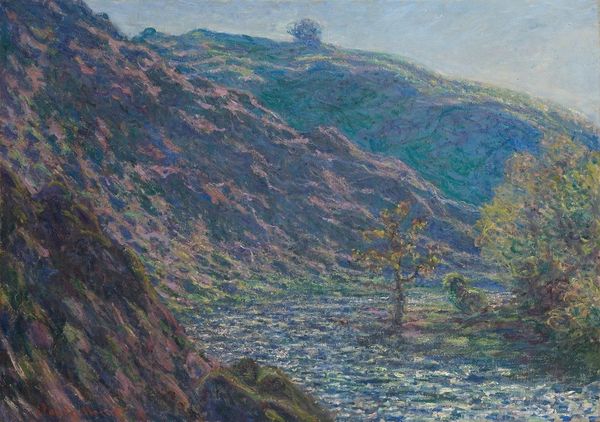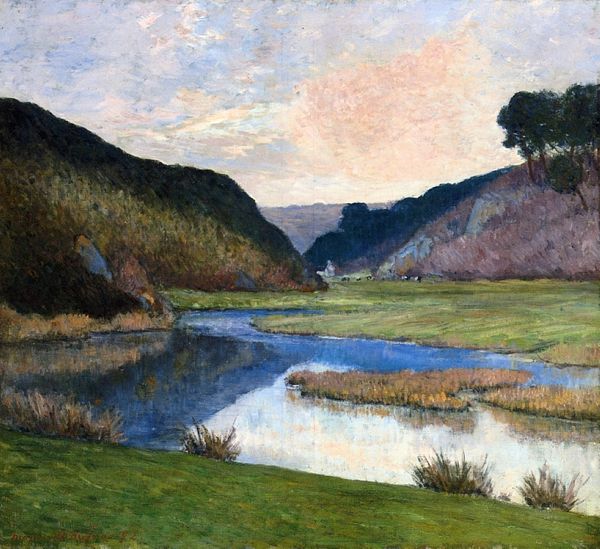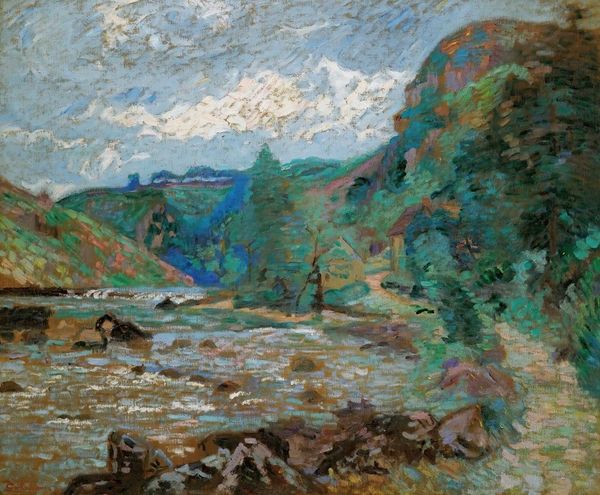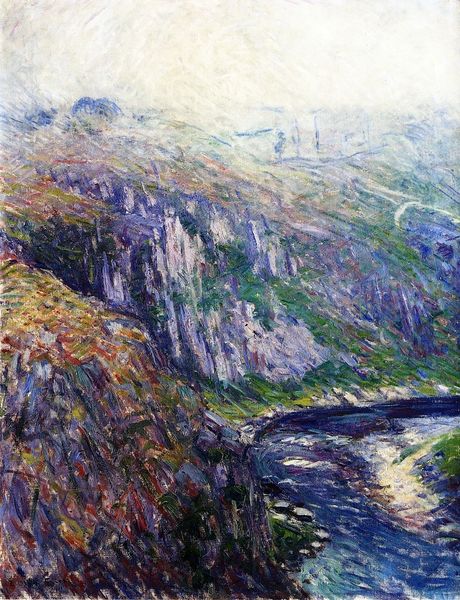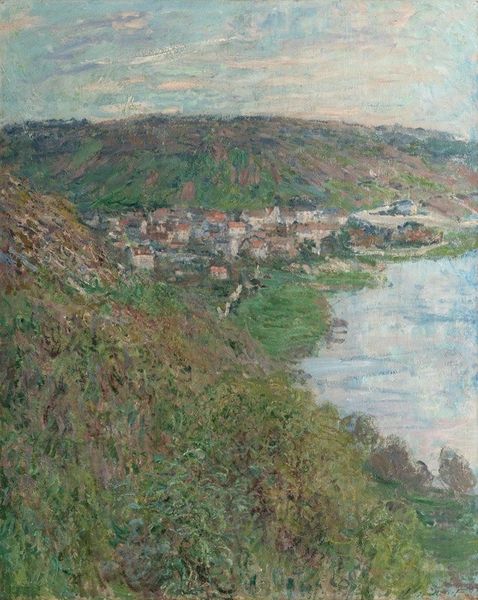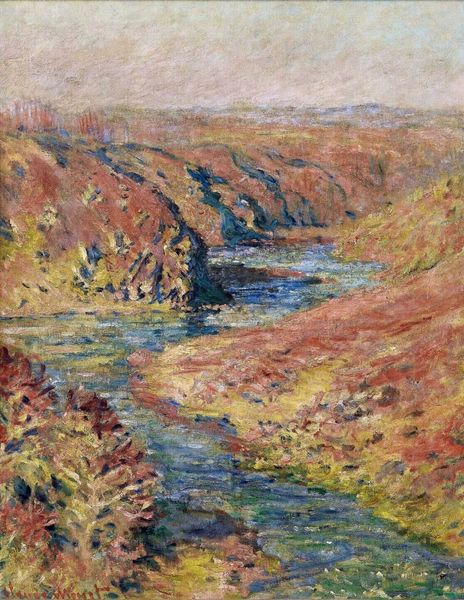
Copyright: Public Domain: Artvee
Here, Claude Monet uses oil on canvas to capture the Valley of the Creuse. The painting overflows with chromatic intensity. The landscape’s rolling hills, rendered with a palette of purples, greens, and oranges, meet the river below. This body of water, snaking through the composition, acts as a mirror reflecting the sky’s fleeting moods. Throughout history, the motif of a river or stream has appeared in countless artworks. Consider, for example, how many artists depict the river Styx as a divide between life and death. Monet’s river seems less allegorical, yet still evokes potent emotions. The water, in its constant flow, symbolizes time, change, and the ceaseless movement of life. The river’s continuous flow also speaks to our subconscious. Perhaps this connects to the Freudian interpretation of water as a symbol of the unconscious mind. The river, like our deepest thoughts and feelings, moves in mysterious currents, sometimes turbulent, sometimes calm, but always present. The river’s reflective surface mirrors not only the sky but also the viewer’s own psyche, inviting introspection and contemplation.
Comments
No comments
Be the first to comment and join the conversation on the ultimate creative platform.
